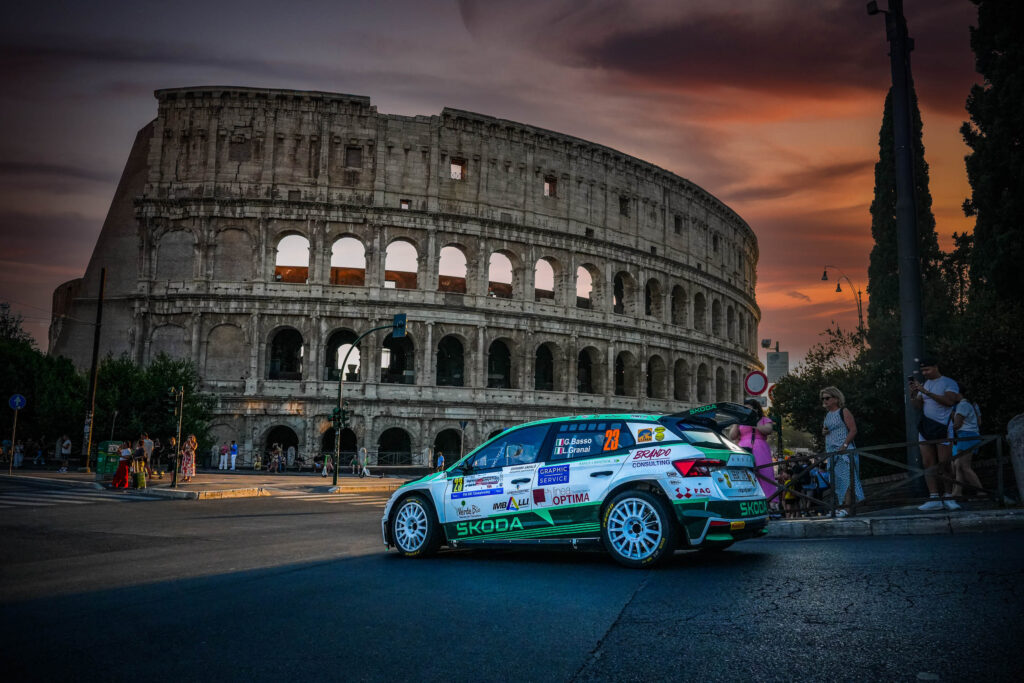The Škoda Fabia RS Rally2 has sophisticated aerodynamics that contribute to the versatility and qualities of this competition car. Škoda Auto and Škoda Motorsport engineers fine-tune the aerodynamics both with the help of CFD computer simulations and directly in the wind tunnel. Testing in it must be very efficient because it is very expensive.
The time a car manufacturer can spend in the wind tunnel to develop its racing car is counted in hours rather than days. This is since Škoda Auto does not have its own wind tunnel and uses wind tunnels in the Volkswagen Group in the development of its cars. This is one of the reasons why a car manufacturer must be very efficient in the development of the aerodynamic side of its cars. And this applies to both production cars and rally cars such as the Fabia RS Rally2.
For this, the engineers were able to base their decision on the very good aerodynamics of the production car itself. Compared to that, however, it was still necessary to work on several adjustments and details. In the case of a production car, engineers are primarily trying to fine-tune the aerodynamics to minimize the car's aerodynamic drag and thus help reduce fuel or electricity consumption, thus helping to increase the range. But for a rally car, the requirements are different: "A rally car is designed to operate in extreme conditions, on a variety of surfaces and to drive at the limits of the car's capabilities. That's why we need to find a combination of permitted aerodynamic solutions that will expand the limits of the car's possible use as much as possible and will work at a racing pace on any surface," explains Lukáš Vojík, the carmaker's aerodynamics specialist. Simply put, in addition to air resistance, which of course they also want to keep as low as possible in a racing car for easy acceleration, the developers also must pay attention to downforce, which helps keep the car on the road.
The initial design of the car's aerodynamics is completely virtual, and simulations using so-called CFD (Computational Fluid Dynamics) play a crucial role in development. "In general, the proportion of use of CFD simulations for wind tunnel tests at Škoda Auto is above average compared to the competition. However, real wind tunnel measurements are still essential and irreplaceable. However, we use it primarily for data verification, fine-tuning important details and for the development of CFD methods," says Lukáš Vojík. According to him, the two paths complement each other perfectly in practice.
In the tunnel as efficiently as possible
Engineers from Mladá Boleslav use Audi's wind tunnel in Ingolstadt to develop the racing specials. And every hour spent in it is truly precious. That is why maximum test and measurement efficiency is important. In addition to the standard technology available in the tunnel, the technicians equip the car with additional measuring devices during the tests to collect as much data as possible to help them find the best solutions for the car and to verify that the CFD calculations correlate with reality.
According to Lukáš Vojík, the tunnel is ideal for fine-tuning complex parts and important elements such as the wheel area or the rear spoiler. "We try to test everything in different positions of the car, for example when swerving or with different height settings of the car," explains Lukáš Vojík. Developers then "live" from the collected data for a longer period, analyse it, compare it with the results of simulations and look for the next way forward. This is important for the ongoing development of a car throughout its life cycle. These are one of the ways to gradually speed up the car, or perhaps improve its overall stability.
When developers discover a promising path through simulations and wind tunnel tests, the solution is then tested in practice. This alone will determine whether the specific modification will eventually appear on the cars delivered to customers.

















